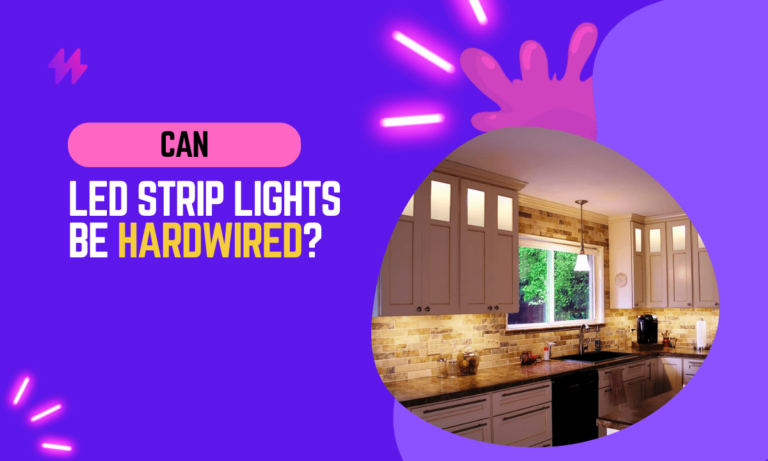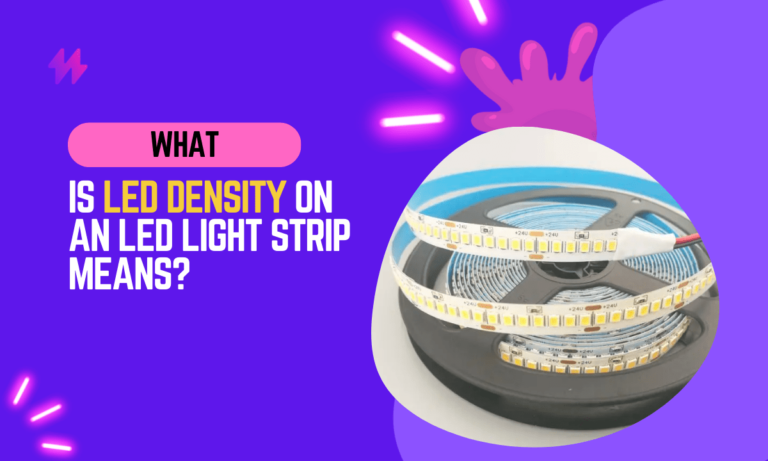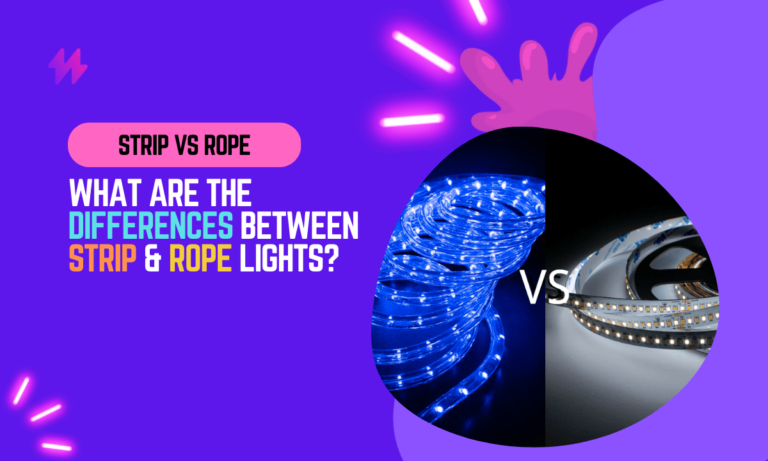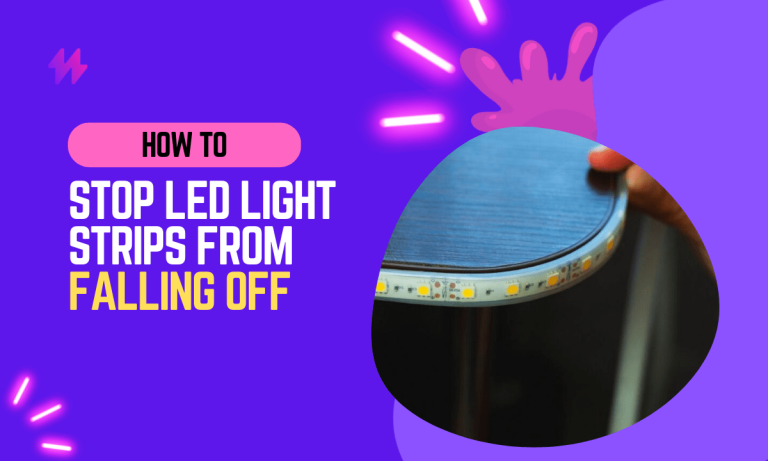What is LED Strip Voltage Drop?

Have you ever had a problem with your LED lights not turning on? If so, you may have been experiencing a voltage drop. Voltage drop occurs when the voltage supplied to an LED strip is not enough to power the LEDs. This can happen for several reasons, such as:
- Too much resistance in the circuit: The length and thickness of the wires determine the resistance of a circuit. If the wires are too long or too thin, they will create more resistance and cause the voltage to drop.
- A loose connection: If the connection between the LED strip and the power supply is loose, it can cause the voltage to drop.
- A faulty power supply: If the power supply is not providing enough voltage, it can cause the LED strip to not turn on.
If you are experiencing any of these problems with your LED lights, you are likely experiencing a voltage drop. In the next section, I will discuss how to troubleshoot and fix voltage drop problems.
I promise that by the end of this article, you will have a better understanding of what voltage drop is and how to fix it. So if you’re ready to learn more, keep reading!
If your LED lights are flickering or not functioning as they should, it might be essential to check the wiring and connections in your electrical system. Understanding voltage drop levels can help you avoid voltage drop issues, ensuring your LED strips operate efficiently and provide optimal lighting.
Understanding LED Voltage Drop: How to Avoid Voltage Drop Issues
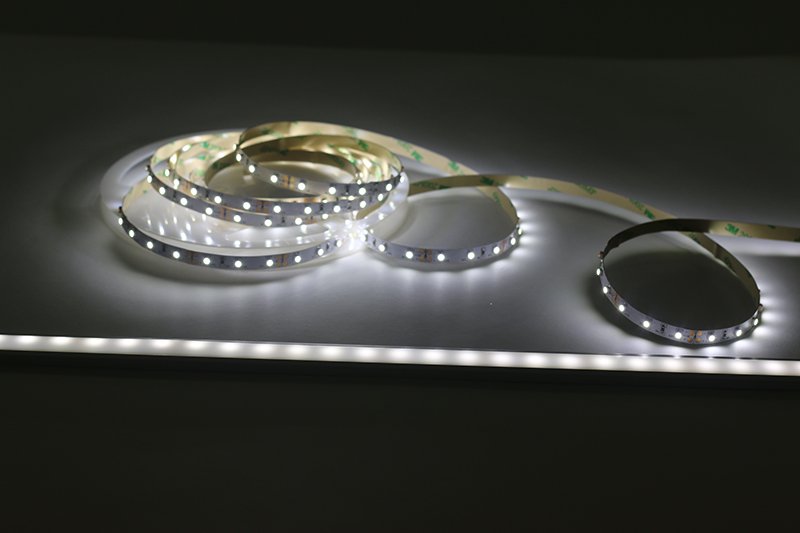
LED strip voltage drop is the difference in voltage between the input voltage and the voltage at the end of the LED strip. This can occur due to several factors, including the length of the strip, the number of LEDs on the strip, and the type of LED strip used.
Also read: Can You Use LED Strips to Grow Plants?
It’s crucial to maintain the electrical wiring of your LED strip to prevent issues like excessive voltage drop. When considering the distance that electricity must travel through copper wires, remember that longer wire runs can lead to noticeable voltage drop, impacting the overall performance of your led lights strip.
Understanding What Causes LED Strip Voltage Drop: Insights into LED Strip Voltage Drop
Several factors can cause LED strip voltage drop, including:
When troubleshooting issues related to LED strip voltage drop, it’s important to measure the actual voltage at various points along the lighting strip. By conducting a thorough voltage analysis, you can identify where electrical resistance is causing voltage losses and ensure a consistent and reliable light output for your projects.
- Length of the strip: The longer the LED strip, the greater the voltage drop will be. This is because the resistance of the LED strip increases as the length increases.
- Number of LEDs on the strip: The more LEDs on the strip, the greater the voltage drop will be. This is because the resistance of the LED strip increases as the number of LEDs increases.
- Type of LED strip: The type of LED strip used can also affect the voltage drop. LED strips with higher power ratings will have a greater voltage drop than those with lower power ratings.
Understanding What is LED Strip Voltage Drop: Problems and Solutions
I have seen voltage drops cause several problems for LED lights. These problems can include:
Inconsistent or low voltages can greatly impact the performance of LED lights. Troubleshooting voltage drop issues in LED strip circuits is essential, as a large voltage drop can lead to reduced brightness and efficiency in light strip operation, resulting in a less than optimal output.
- Dimmed or flickering lights: When the voltage drops, the LEDs will not be able to reach their full brightness. This can make them appear dimmer or flicker.
- Shortened lifespan: LEDs are designed to operate at a specific voltage. When the voltage drops, it can damage the LEDs and shorten their lifespan.
- Failure to turn on: If the voltage drops too low, the LEDs will not be able to turn on at all.
Calculating LED Strip Voltage Drop: A Comprehensive Guide

- Identify the desired length of the LED strip you intend to use.
- Verify the voltage output of your LED power supply.
- Calculate the overall wattage of the LED strip by multiplying its length by the wattage per foot.
- Determine the voltage drop of the LED strip by multiplying the total length by the voltage drop per foot.
- Subtract the calculated voltage drop from the LED power supply voltage to establish the minimum required voltage for proper LED strip functionality.
- Alternatively, streamline the process by utilizing online voltage drop calculators, which consider specific LED strip and power supply specifications for a more precise calculation.
The formula for calculating LED strip voltage drop is:
Voltage drop = (CurrentxResistance) where;
- Voltage drop is the difference in voltage between the input voltage and the voltage at the end of the LED strip.
- Current is the current flowing through the LED strip.
- Resistance is the resistance of the LED strip.
To calculate the voltage drop, you need to know the input voltage, the current flowing through the LED strip, and the resistance of the LED strip.
The input voltage is the voltage that is supplied to the LED strip. This is usually 12V or 24V.
The current flowing through the LED strip can be calculated by multiplying the number of LEDs on the strip by the current rating of each LED. For example, if you have a 10-foot LED strip with 30 LEDs per foot, and each LED has a current rating of 20 mA, the total current flowing through the strip will be 30 LEDs20 mA = 600 mA.
The resistance of the LED strip can be calculated by dividing the input voltage by the current flowing through the strip. For example, if the input voltage is 12V and the current flowing through the strip is 600 mA, the resistance of the strip will be 12V / 600 mA = 0.02 ohms.
Once you know the input voltage, the current flowing through the LED strip, and the resistance of the LED strip, you can calculate the voltage drop using the formula above.
Also read: How to Dim LED Strip Lights?
To ensure your LED strip operation remains efficient, always select the right cable thickness for your wire runs, as this affects voltage drop significantly. It’s important to remember that using longer wire lengths or cables of improper gauge can lead to increased voltage drop, thus impacting the available voltage supplied to your LED drivers and, ultimately, the performance of your LED light strips.
Effective Methods to Compensate for LED Strip Voltage Drop
There are several ways to compensate for LED strip voltage drop, including:
- Using a higher input voltage: Using a higher input voltage will reduce the voltage drop. However, this may not be practical if you are using a power supply that is not designed for a higher input voltage.
- Using a lower current rating: Using a lower current rating will reduce the voltage drop. However, this may not be practical if you need to achieve a certain brightness level.
- Using a thicker LED strip: Using a thicker LED strip will reduce the resistance and, therefore, the voltage drop. However, this may not be practical if you are working with a limited amount of space.
- Using a buck converter: A buck converter is a type of electronic circuit that can reduce the voltage without reducing the current. This is a good option if you need to use a higher input voltage but do not want to reduce the current.
You may also like: How to Use UV Strip Lights?
To mitigate voltage drop issues in your LED strips, you can utilize thicker wire cables for your wire runs, as this will help to decrease resistance and maintain a consistent voltage input. Furthermore, implementing the right power supply units that match your LED strip voltage requirements will ensure that your LEDs output optimal brightness and efficiency, minimizing the resulting voltage drop in your circuit.
Final Thoughts on LED Strip Voltage Drop and Its Implications
In conclusion, understanding LED strip voltage drop is essential for anyone looking to implement LED strip lighting effectively, whether in residential, commercial, or artistic settings. Voltage drop occurs when the electrical current traveling along the strip encounters resistance, leading to a decrease in voltage along the length of the strip. This can result in the LEDs at the end of the strip emitting dimmer light compared to those at the beginning. The phenomenon is particularly noticeable in longer strips where the distance the current must travel is greater, thereby increasing the resistance encountered. To mitigate this effect, it is important to calculate the expected voltage drop over the desired length of the strip and adjust the installation method accordingly. Using higher voltage strips, installing multiple shorter sections in parallel, or employing a higher gauge wire for power connections can help maintain consistent brightness across the entire length of the strip.
Moreover, proactive planning can greatly enhance the performance and appearance of LED lighting installations. When designing projects that involve LED strips, one should also consider the type of LED strip, as different models and brands may have varying resistances and thus susceptibility to voltage drop. Consulting with experts or referring to detailed product specifications can provide valuable insights into the best practices for each particular setup. Additionally, regular maintenance and testing of the installation can prevent potential issues from becoming significant problems, ensuring that the lighting remains both beautiful and functional over time. By taking these factors into account, designers and DIY enthusiasts alike can maximize the effectiveness of their LED strip lights, ensuring they provide a reliable and consistent source of illumination in any application.
What Is LED Strip Voltage Drop | Factors Influencing LED Strip Voltage Drop
LED strip voltage drop refers to the loss of voltage that occurs as electricity travels along the length of the strip. This phenomenon is particularly noticeable in longer runs of 12V LED strips, which lose voltage faster than their 24V counterparts. Factors influencing this drop include wire gauge, as thinner copper cables have higher electrical resistance, leading to greater losses. The connection wire’s length also plays a significant role, as the distance between the power source and the LED strip can affect the overall performance. Higher power loads or wattage demand from the LED emitters and other electronic components also result in increased voltage drop. Consequently, understanding what is LED strip voltage drop is essential for effectively managing and maintaining an optimal voltage range, ensuring that the LED strip receives the necessary power for consistent brightness and longevity.
What is LED Strip Voltage Drop | Length of the LED Strip
Voltage drop is a phenomenon that occurs in electrical circuits, particularly noticeable in long runs of LED strips. What is LED Strip Voltage Drop can be understood as the loss of voltage that happens due to electrical resistance along the conductors. As the length of the LED strip increases, the current voltage at the end of the strip may be significantly lower than the original voltage at the beginning. For instance, 12V LED strips will lose voltage faster than 24V strips, leading to potential color shifts and dimming in the light output.
The gauge of the wire used in the connection plays a crucial role in this voltage drop. Thicker, properly sized wire can help minimize loss over longer wire runs, ensuring that the end voltage remains closer to the main input voltage. Using inappropriate wire size may result in increased resistance, causing the voltage drop to rise. This effect can be particularly critical in high-power applications, such as electric heaters or amplifiers, where maintaining the correct driving voltage is essential for performance. Understanding wire length distance and selecting the correct conductors can help mitigate the effects of voltage drop inherent in the design of LED strip circuits.
Gauge of the Wires Used
The gauge of the wires used in an LED strip installation plays a crucial role in determining voltage drop. What is LED Strip Voltage Drop? It often signifies that you are losing power due to electrical resistance in the wiring. High voltage electricity can exacerbate this issue, particularly when longer wire run lengths are employed. A lower gauge number indicates a thicker wire, which can better handle higher amperage without significant loss. For instance, copper traces and connecting wires that are too thin can lead to increased voltage drop, impacting LED chip performance and overall brightness. This problem is especially pronounced in low voltage lighting setups, such as with 12V LED strips, where every inch of wire run contributes to loss.
Using the next thickest wire can provide a handy voltage drop solution. By minimizing resistance, you can ensure that the power supply end of your circuitboard delivers a consistent voltage to your LED lights. For example, high-power applications like RGB lights and white light configurations may require reevaluation of your wire gauge to maintain performance. If you notice that the beginning voltage at the power unit is significantly higher than the tail voltage at the end of the run, it may indicate that the current wire gauge is insufficient. Upgrading to thicker wires allows for better handling of the rated power, reducing the risk of voltage drop that can affect the functionality of e12 lamp fixtures and consumer products.
Effects of Voltage Drop on LED Performance
Voltage drop in LED strips plays a critical role in their overall performance and longevity. What is LED Strip Voltage Drop? It refers to the reduction of voltage in the electrical circuit as it travels along the length of the LED strip, typically due to electrical resistance. For instance, as voltage drop increases, power voltage decreases which may lead the LED chips to operate below their optimal performance level. This can result in dimming effects and color shifts, as the strip may consume lower voltage than required. High-voltage setups often involve transformers and power supplies that convert ac voltage to dc voltage, affecting the line voltage delivered to the strip. The gauge of wires used can also influence this phenomenon; thinner wires may contribute to higher resistance and increased voltage drop. Relying on the same power rating across reels or utilizing multiple power supplies may mitigate this issue, ensuring that each section of the LED strip receives sufficient voltage. Monitoring the voltage drop with a meter can provide insights into the electrical work being performed, revealing how much power is consumed in watts and amps over the length of the strip.
Dimming and Color Shifts
LED strip voltage drop can lead to dimming and unexpected color shifts in LED installations. This phenomenon occurs when the power supplied to the strips is insufficient due to resistance in the electronic circuit. As voltage drops, particularly in 12V systems, the brightness emitted by the strips diminishes. High power LED installations may exhibit this effect more prominently, especially over longer runs of LED strip substrates. A significant voltage drop typically signifies that there is a loss of power, causing the emitted light to be less intense and altering the visual quality of the signal generated by the LEDs.
Color shifts can also arise from variations in voltage drop along the LED strip run. In scenarios where different power sources are used, or when there is a substantial voltage drop, the color temperature of the light can change from warm to cool or vice versa. This alteration can be noticeable when comparing the first meter to the fifth meter of the strip. Ensuring a constant voltage across the entire length of the strips is essential for maintaining consistent color and brightness. Using a meter to measure voltages at different points can help identify areas where significant drop occurs, allowing for adjustments such as adding wire to minimize losses.
Overall Lifespan of LED Strips
Understanding what is LED strip voltage drop is crucial for maintaining the longevity of LED strips. Voltage drop typically signifies that you are losing power due to electrical resistance, which can significantly affect the performance and lifespan of the lights. For instance, a drop of 12V or inadequate voltage can result in the strips consuming voltage inefficiently, leading to premature failure. In contrast to incandescent light bulbs, which have a wider voltage tolerance, LED strips require more precise voltage levels to function optimally.
The overall lifespan of LED strips can dramatically decrease when they experience excessive voltage drop. If not properly addressed, these voltage fluctuations can alter the brightness and color output of the lights, ultimately impacting their lifespan. Using a meter strip can help in monitoring the voltage drop across the strips. Implementing strategies such as adding additional wire or optimizing the power supply can mitigate the drop, ensuring connectors receive sufficient volts for long-lasting performance.
Techniques for Minimizing LED Strip Voltage Drop
To effectively minimize LED strip voltage drop, understanding what is LED strip voltage drop is crucial. Voltage drop, particularly in 12V and DC5V strips, typically signifies that you are losing power due to electrical resistance in the wiring. This loss can consume voltage, leading to dimming and inconsistent performance. Utilizing thicker wires can significantly reduce this drop, as they offer better conductivity. Shortening the distance between the power source and the LED strips also helps to maintain voltage levels, ensuring that the full voltage reaches the lights without excessive loss. These techniques can lead to improved performance and longevity of your LED installations.
Using Thicker Wires for Better Conductivity
Thicker wires can significantly reduce voltage drop in LED strips. What is LED Strip Voltage Drop? It refers to the loss of voltage as electricity travels through the wires, often caused by resistance. A lower gauge wire decreases electrical resistance, ensuring more power reaches the LEDs. For instance, when using 12v LED strips, a thicker wire can help maintain the correct voltage, minimizing the chances of dimming or color shifts due to voltage drop.
Using thicker wires prevents excessive heat buildup and enhances safety in electrical systems. Voltage drop typically signifies that you are losing power to electrical resistance, which can affect LED performance. By lowering the resistance with appropriately sized wires, the efficiency of the 12v LEDs improves substantially, providing brighter and more consistent illumination. Understanding and addressing the implications of voltage drop is crucial for ensuring longevity and optimal function in LED installations.
Shortening the Distance Between Power Source and LED Strips
Reducing the distance between the power source and LED strips can significantly mitigate LED voltage drop issues. Understanding what is LED Strip Voltage Drop is essential, as longer distances typically increase the chance of power loss in the form of heat. Voltage drop can adversely affect the performance and brightness of your LEDs, particularly in 12v strips where even small drops in voltage can lead to noticeable dimming.
Implementing shorter runs from the power supply to the volts strips can enhance overall efficiency. By minimizing the length of wiring, you can decrease the voltage drop.12v, leading to more consistent lighting performance. This approach not only improves brightness but also helps sustain the integrity of the LEDs over time, making it a practical solution for anyone looking to optimize their LED set up.
Tools for Measuring LED Strip Voltage Drop
Accurate measurement of what is LED Strip Voltage Drop is essential for optimizing performance and longevity. Multimeters are among the most reliable tools for capturing precise voltage readings across LED strips, allowing users to identify any significant drops that may affect brightness and color consistency. These devices can measure both DC voltage and current, making them versatile for various applications. For those looking for a more streamlined approach, LED Voltage Drop Calculators provide a quick way to estimate voltage loss based on parameters such as strip length, wire gauge, and current draw. Understanding what is LED Strip Voltage Drop and employing these tools enables users to take proactive measures in maintaining their LED lighting systems.
Multimeters for Accurate Readings
To accurately assess what is LED Strip Voltage Drop, multimeters serve as essential tools in any DIY enthusiast’s or professional’s toolkit. These devices provide precise measurements of voltage levels throughout the LED strip, allowing users to identify areas where voltage drop may be occurring. The readings taken from a multimeter can help diagnose performance issues, ensuring that LED strips operate efficiently.
Using a multimeter is straightforward, making it accessible even for those new to electrical work. By measuring voltage at various points along the strip, one can determine the exact amount of drop and take necessary corrective actions. Understanding what is LED Strip Voltage Drop through these measurements can enhance the overall performance and longevity of the LED installations.
LED Voltage Drop Calculators
Calculators designed to measure voltage drop are essential tools for anyone working with LED strips. Understanding what is LED Strip Voltage Drop is crucial for maintaining optimal performance and ensuring that lights operate at their intended brightness. These calculators allow users to input parameters such as the length of the strip, wire gauge, and current draw to provide a clear picture of the anticipated voltage drop.
These tools simplify the process of determining how much voltage may be lost over a distance. This clarity aids in making informed decisions about installation and materials. By accurately calculating what is LED Strip Voltage Drop, users can identify appropriate wire sizes and adjust their setups to minimize potential issues, enhancing both safety and efficiency in LED lighting applications.


